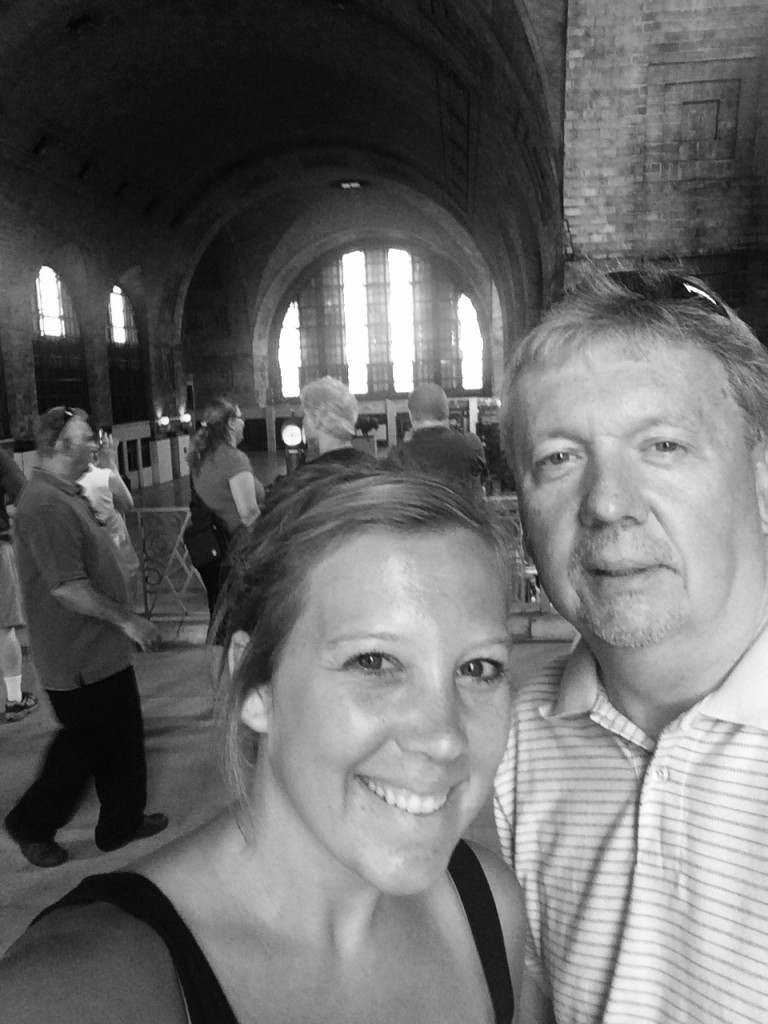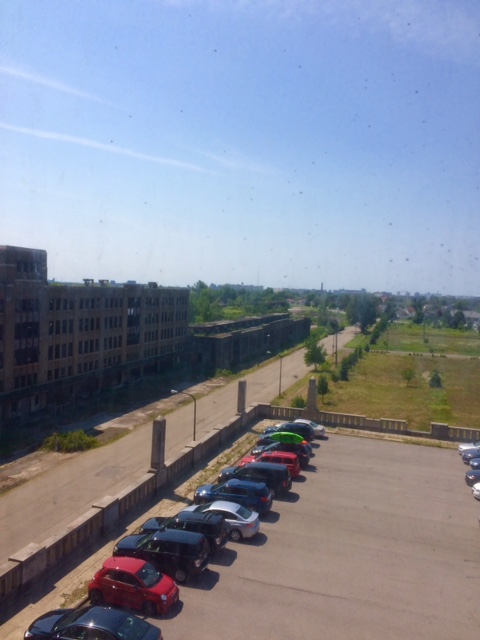Exploring the Central Terminal
/ When I saw that the Buffalo Central Terminal Restoration Corporation was hosting a tour of the building I had to jump on it. Growing up on Fillmore, the area holds a special place in my heart despite the decline in the neighborhood. It's hard to imagine that a building that beautiful once was booming with business during World War II. My father always talks about how my grandfather would use the trains to travel off to war and how he and my uncle would play roller hockey in the lobby.
When I saw that the Buffalo Central Terminal Restoration Corporation was hosting a tour of the building I had to jump on it. Growing up on Fillmore, the area holds a special place in my heart despite the decline in the neighborhood. It's hard to imagine that a building that beautiful once was booming with business during World War II. My father always talks about how my grandfather would use the trains to travel off to war and how he and my uncle would play roller hockey in the lobby.
Going on this tour gave me a better understanding of how the building was utilized during its hey day and how horrible the City of Buffalo's people in power can be at times. I also learned its those advocates and volunteers who have a lot of passion for the Central Terminal who keep it going and I can only hope one day the building is put to good use again.
-B
Here are some facts I took away from the tour:
- The Central Terminal process began in the 1880s. It took 43 years (1925) for NY Central and the City of Buffalo to agree on a location.
- The bones of the structure are made of steel with classic brick art deco. Every 5th row has a row of smaller bricks for structural support. You just don't see buildings built like this anymore
- The station is 85 years old
- It took 2 years to complete the entire building
- More parking than anywhere else in the city, because it has underground space
- The Central Terminal was a 15 million dollar project - $5 million went into building the building and $10 million went into reworking train tracks
- Chicago was the top city, followed by Buffalo and then NYC being third as cities to have the most train travel
- June 23 1929 was opening day just a few short months before the Great Depression hit
- At its prime there were 250 trains coming into the Central Terminal a day (that's every six minutes) and 3200 passengers daily
- WW II is when the terminal was used to its capacity
- There are 17 floors in the tower with the 17th being a water tank
- 1500 people worked out of that building, mostly in the railroad industry
- On a good day you can see the Terminal from 15 miles away
- In 1999 the tower was re-lite for people to see
- There are multiple buildings within the main tower - some of those buildings were for electrical control towers, the power house, coat shop, mail and baggage and REA platforms
- The U.S. Postal Service used railroads the most
- In 1952 NY Central put the Terminal up for sale. It dwindled down from 100 trains a day to 50 trains to 8 trains a day
- There was a belt line in the City up to Toronto
- The main lobby holds 9 ticket stations and really no benches - the concept was to get people in and out in of the building
- There were a maze of tunnels underground
- Last train out of the Central Terminal was in 1979
- The City of Buffalo allowed the building to go to salvage. The Jimmy Griffin administration wanted to tear the building down
- In 1997 the Central Terminal Restoration bought the building
- Tony Fedele was a great owner for the Terminal and lived above the lobby for the 5-6 years while he was the owner. The City raised the property taxes each and then let the building fall apart with graffiti and broken windows.
- After Tony Fedele's ownership, Thomas Telesco purchased the building for salvage rights and sold artifacts to multiple places including overseas, leaving a good number of the original pieces still missing from the building to this day.
- Outside of the train travel industry another industry taking place in the Trolley Lobby was the Mafia and that was led by Council member Montana
To see a list of upcoming events that are taking place at the Terminal or to learn how you can help out, visit their website at buffalocentralterminal.org







